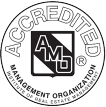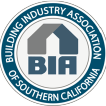What if your HOA could really make you happy?
We get it. Community association management has gotten a reputation of being all about rules, regulations and mountains of red tape. We’re here to help you think about HOA management in a new way.
What if your common area doubled as a concert hall?
What if your neighbors became life-long friends?
What if you felt empowered, excited and finally really listened to?
We’re reinventing community management with innovative ideas pulled from best practices in other industries, smart technologies that make your life easier and managers who devote their careers to helping you feel more inspired by your HOA.
Community Associations We Serve
Onsite
Communities
HOA management that works for you
Our proven community association management services preserve your community’s assets and enhance your home values.
Property Management Services & Expertise
Your HOA is as important to us as it is to you, which is why it’s our goal to make HOA living easier for you. We are laser-focused on providing support that increases property values and creates a stronger sense of community. Consistent follow-up and follow-through are our top priorities as we increase the transparency between board, membership and management company.
- Property maintenance supervision
- Board meeting facilitation and preparation
- Community communication programs
- Vendor qualification and monitoring
- Architectural support services
- California civil code compliance
- Board member training programs
Financial & Accounting
In addition to making sure your association’s bills are paid on time, we provide full-scope accounting services to make it easier to maintain your fiduciary responsibility. Our detailed record keeping, industry best practices and insight into long-term planning keeps your association on track to maintain the right balance of cash and reserves.
- Financial statement preparation
- Accounts payable processing
- Accounts receivable collection process
- Assessment collection and small claims services
- Effective internal controls
- Annual operating & reserve budget preparation
- Association banking activities
- In-house insurance support services
Cutting Edge Technology
What if actively participating in your HOA was just part of your daily digital routine? Our carefully chosen technologies are designed to streamline how you interact with your HOA, so you can get back to enjoying the rest of your day.
- Homeowner and board portal
- Convenient online payment programs
- Electronic statements and billing inserts
- Electronic notification system
- Standard and customized community websites
- Online access to association documents and information
- Online account updates
Exceptional service from experienced professionals
By investing in specialized education, accreditation and keeping our portfolio community managers’ account load low, our friendly management and support teams can dedicate more time and attention to every community we serve. We’re one of the few firms in Southern California to have earned an Accredited Management Organization (AMO®) designation through IREM (Institute of Real Estate Management). We’re also active members of CAI (Community Associations Institute) and BIA (Building Industry Association).
Keystone Spotlight
Community
Accounting Department
Keystone Team Member Since
2019
HOW TO SPOT
Her positive outlook and proactive attitude
“Value of our properties improved”
Do HOA better.
Have a question? Need more info? Just wanna say hi? We’re a friendly crew, always here to help!




